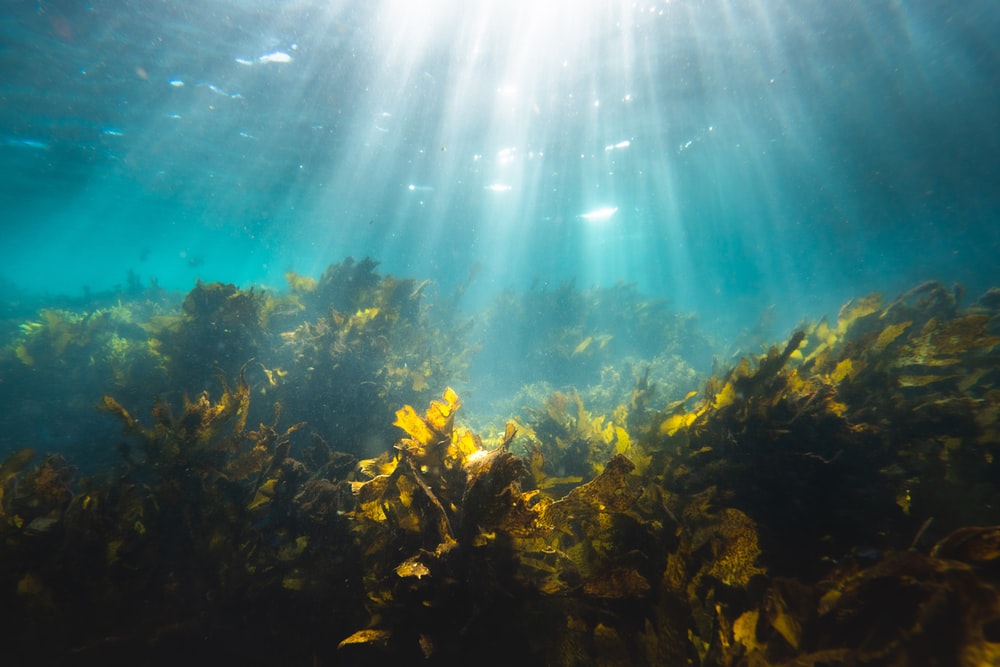The anti-aging properties of Sargassum, a brown algae, have been highlighted in recent studies. Sargassum extracts and their derivatives hold great promise in skincare because of their many benefits, including antioxidant, anti-inflammatory, whitening, skin barrier repair, and moisturizing properties.
In this blog, I would like to introduce the study, “Potential Beneficial Effects of Sargassum spp. in Skin Aging” by Min-Kyeong Lee et al. This research examines Sargassum’s effects on skin aging, exploring the molecular mechanisms that contribute to its potential benefits, including whitening, moisturizing, improved skin barrier function, sun protection, and antioxidant and anti-inflammatory actions. Skin aging, with its hallmarks of abnormal pigmentation and wrinkles, is driven by intracellular and extracellular oxidative stress caused by reactive oxygen species (ROS).
Data showed that Sargassum spp significantly inhibited UVA-mediated increase in skin wrinkles and peeling and induced the skin healing process. Due to its relatively short chain length, low molecular weight (LMW) fucoidan demonstrates a range of biological activities, including antioxidant, anti-inflammatory, and antibacterial properties, and also supports immune regulation. It is further hypothesized that this fucoidan achieves photoprotective effects via its regulation of pro-inflammatory and anti-inflammatory cytokines. It dose-dependently reduced the increase in intracellular ROS levels and inhibited the mitochondrial-mediated apoptosis pathway. The UVB protective effect of Sargassum spp polysaccharides was also investigated using HaCaT keratinocytes.
Treatment with polysaccharides (31.25-125 μg/mL) reduced intracellular ROS levels and pro-inflammatory cytokine (IL-1β, IL-6, TNF-α) secretion in UVB-stimulated HaCaT cells. In addition, polysaccharides significantly reduced the mRNA expression levels of MMP-1, 3, and 9, which are involved in extracellular matrix degradation, in UVB-stimulated HaCaT cells.
A different study examined the effects of sulfated polysaccharides in the context of photoaging stimulated by UVB exposure. Sulfated polysaccharides (25–100 μg/mL) improved cell viability in UVB-irradiated HDF cells by reducing intracellular ROS levels in a dose-dependent manner. Furthermore, sulfated polysaccharides significantly prevented collagen degradation by reducing intracellular collagenase and elastase activities and MMP expression levels in UVB-irradiated HDF cells. The protective effect of sulfated polysaccharides against UVB-induced skin damage is associated with the inhibition of nuclear factor κB (NF-κB), AP-1, and mitogen-activated protein kinase (MAPK) signaling pathways.
The development of inflammatory skin disorders is strongly associated with and often caused by dysregulation of the body’s inflammatory signals. Inflammatory responses induced by UV exposure are causative factors of skin aging and skin cancer, and it has also been shown that regulators of inflammatory signaling, such as Toll-like receptor 4, are involved. This led the researchers to summarize studies on the anti-inflammatory effects of Sargassum spp extracts.
Researchers recently studied how alginic acid from Sargassum seaweed protects against urban air pollution, using human skin cells and mouse immune cells. It significantly reduced the protein levels of COX-2, PGE2, IL-6, and TNF-α and intracellular ROS levels in HaCaT keratinocytes treated with CFD, which induces skin inflammation. These anti-inflammatory effects are associated with the inhibition of NF-κB and MAPK signaling pathways. In the same study, when culture medium from CFD-stimulated HaCaT cells was added to RAW264.7 cells, SHA-treated culture medium inhibited inflammatory factors (PGE2, NO, iNOS, COX-2) and proinflammatory cytokines (TNF-α, IL-6, IL-1β). This indicates SHA’s effectiveness in shielding keratinocytes from CFD-triggered inflammation.
One study investigated the anti-inflammatory effect of polysaccharides from S. fusiforme in LPS-induced RAW264.7 cells. The results showed that polysaccharides (25–100 μg/mL) significantly inhibited NO production and enhanced cell viability in LPS-induced RAW264.7 cells. Furthermore, polysaccharides reduced the production of PGE2, TNF-α, IL-1β, and IL-6, and inhibited the protein expression of iNOS and COX-2 in LPS-stimulated RAW264.7 cells. These results suggest that polysaccharides from S. fusiforme have potential anti-inflammatory activity.
The skin barrier is crucial for protecting the body from physical and chemical harm and preventing dehydration. A key measure of skin health is its ability to moisturize and repair its protective barrier. Recent studies have shown that various extracts of Sargassum showed beneficial effects on moisturizing and repairing the skin barrier.
Additionally, several studies have reported that S. horneri extracts have moisturizing and skin barrier repair properties. Ethanol extract pretreatment increased the expression levels of skin moisture-related proteins, involucrin, filaggrin, and lymphoepithelial Kazal-type related inhibitors. Ethanol extracts also decreased the protein levels of genes associated with skin inflammation and stratum corneum acidification, including protease-activated receptor 2, kallikrein-related peptidase, and phospholipase A2, in cells exposed to fine dust. Furthermore, the ethanol extract increased the levels of tight junction proteins. These increases show the effectiveness of ethanol extracts on fine dust-impaired skin barrier function. The increase in hyaluronic acid, resulting from ethanol extracts, combats dry skin by locking in moisture within the dermis.
Once again, several studies have confirmed that S. fusiforme extracts and derived compounds exhibit anti-melanogenic effects. Research explored how sulfated polysaccharides from a S. fusiforme Celluclast extract impact melanin production in B16F10 melanoma cells stimulated by α-MSH. The sulfated polysaccharides dose-dependently reduced α-MSH-stimulated melanin content and intracellular tyrosinase activity. In addition, the sulfated polysaccharides inhibited the expression of melanogenesis-related proteins such as MITF, tyrosinase, TRP-1, and TRP-2 in α-MSH-induced B16F10 cells.
Another study evaluated the melanogenesis-inhibitory effect of fucoidan isolated from S. fusiforme in α-MSH-stimulated B16F10 melanoma cells. Fucoidan substantially reduced melanin production stimulated by α-MSH by lowering tyrosinase activity. The anti-melanogenic mechanism of fucoidan is related to inhibiting the expression of tyrosinase, TRP-1, and TRP-2 by activating the ERK-MAPK signaling pathway and inhibiting the nuclear translocation of MITF.
The study results indicate that Sargassum extracts and their derivatives could combat skin aging by improving antioxidant, photoprotective, anti-inflammatory, anti-melanogenic, moisturizing, and skin barrier repair capabilities. The findings of these studies may be applicable in the fields of cosmetics and pharmaceuticals.
Source: Mar Drugs. 2022 Aug; 20(8): 540. doi: 10.3390/md20080540
